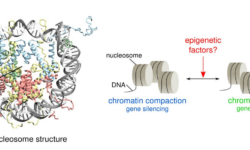Enhancing Protein Binding Site Prediction with Dynamic Features and Surface-Core Discrimination
Omid Mokhtari Inria, Loria, CNRS, Universite de Lorraine, Nancy Proteins are dynamic entities, and their conformational flexibility, particularly in intrinsically disordered regions (IDRs), plays a crucial role in their function. While significant progress has been made in predicting protein-protein interfaces, existing methods often overlook conformational heterogeneity. We employ state-of-the-art geometric…



